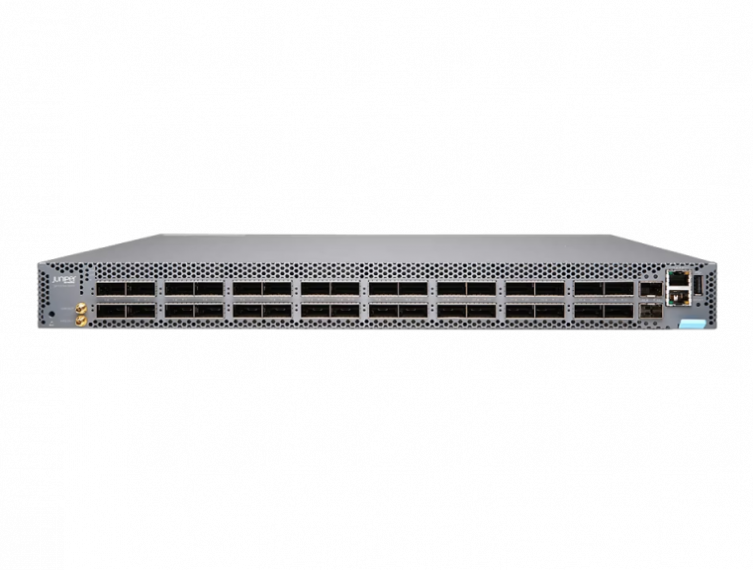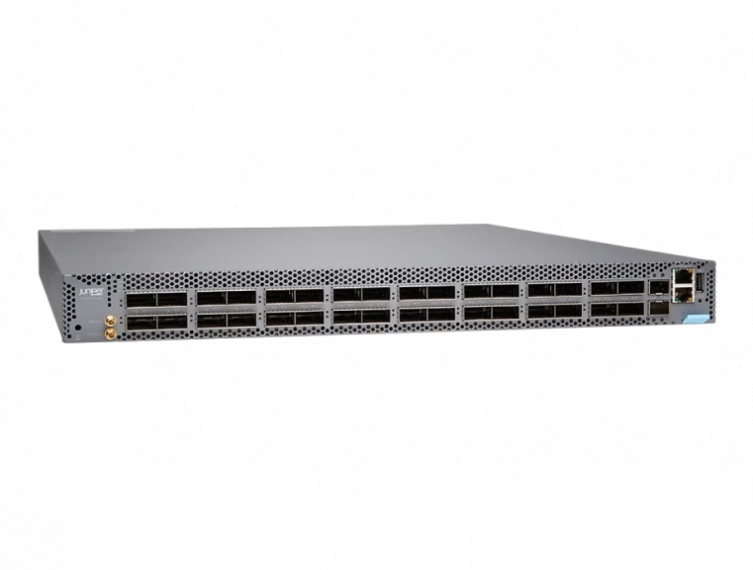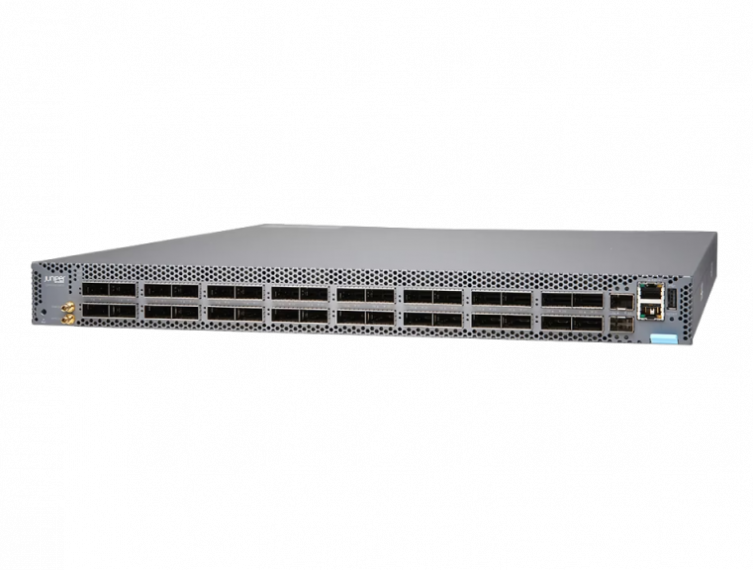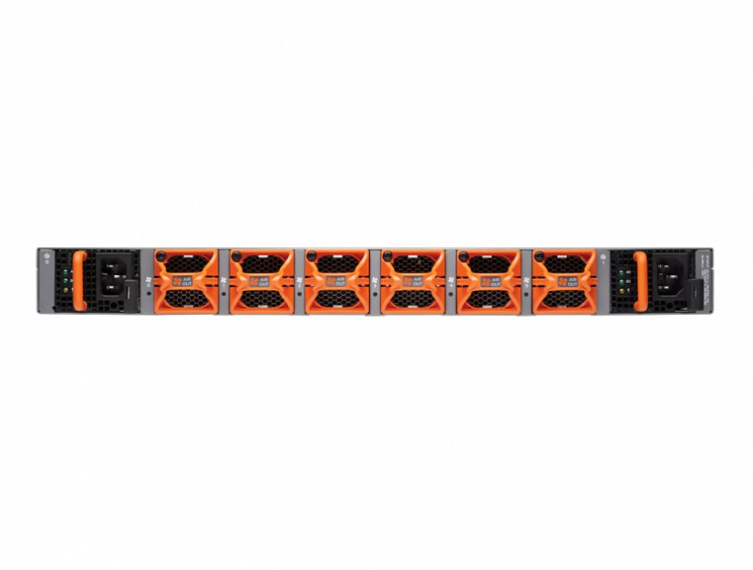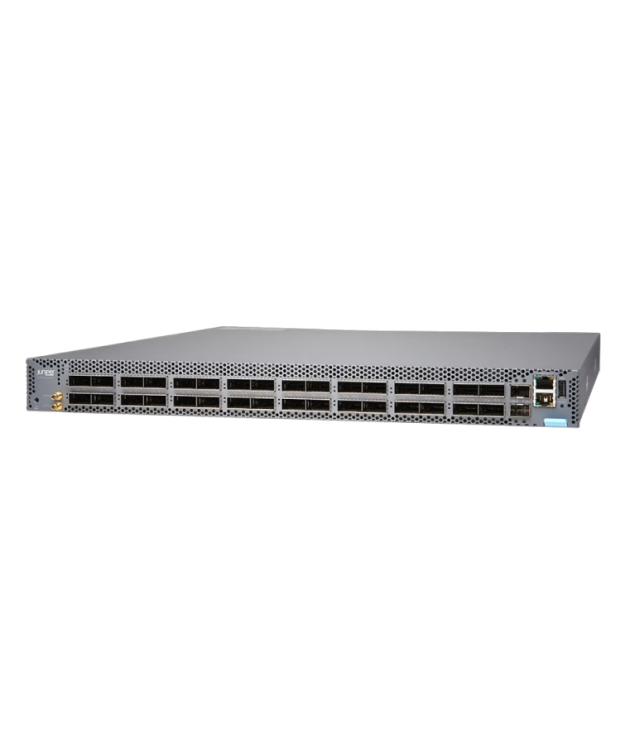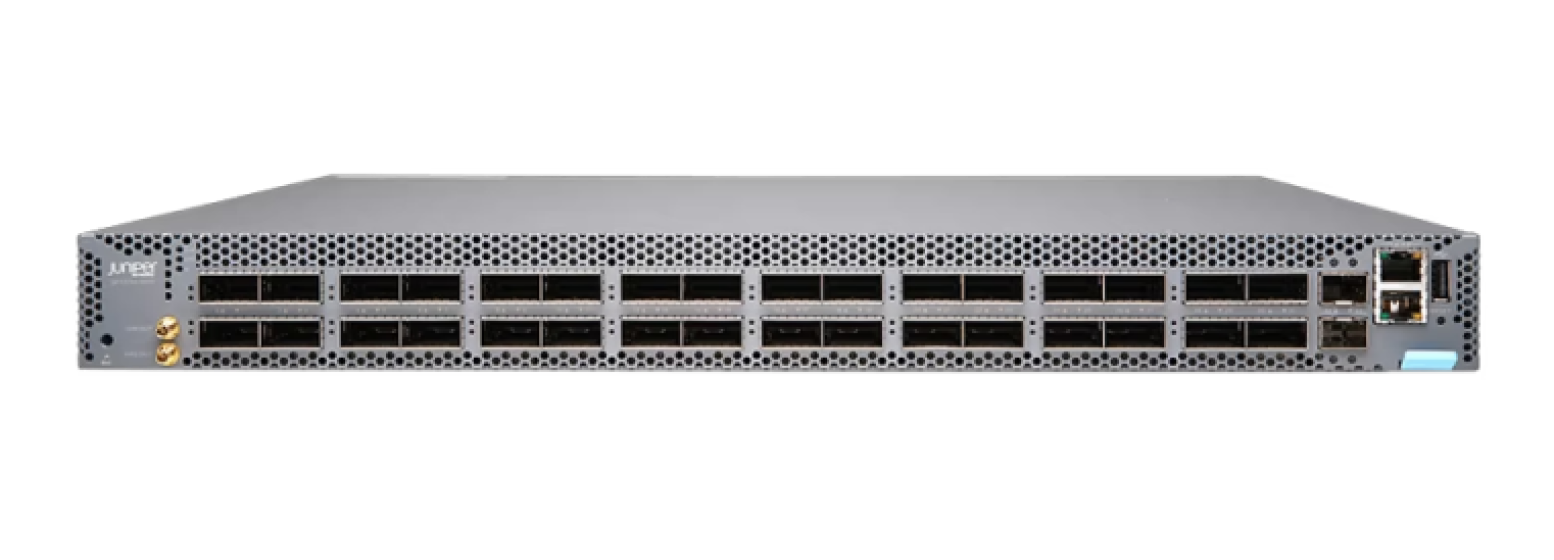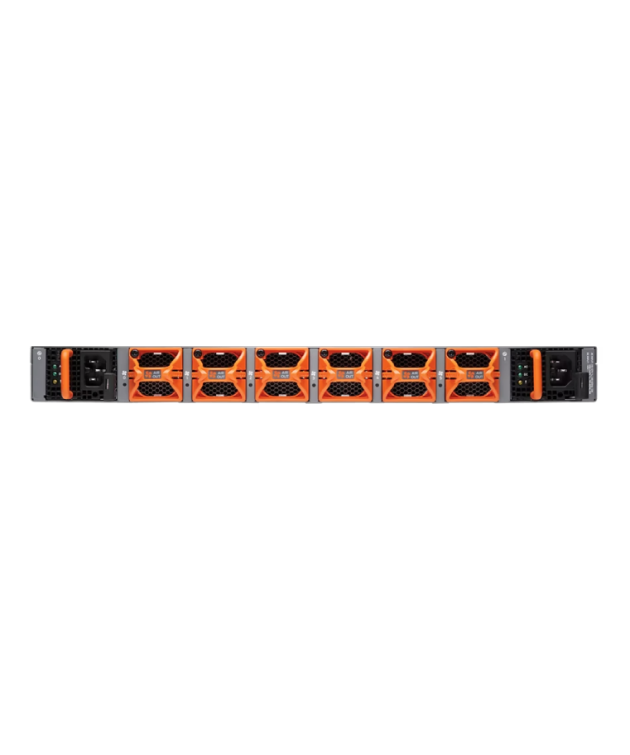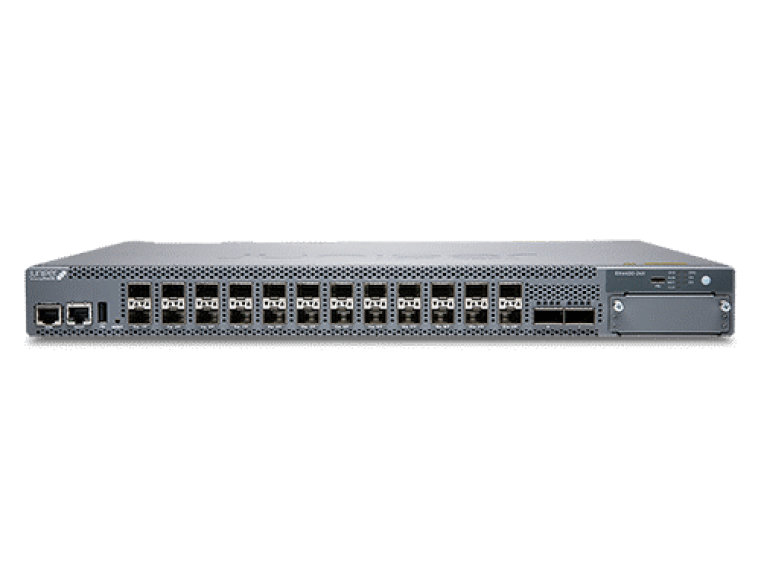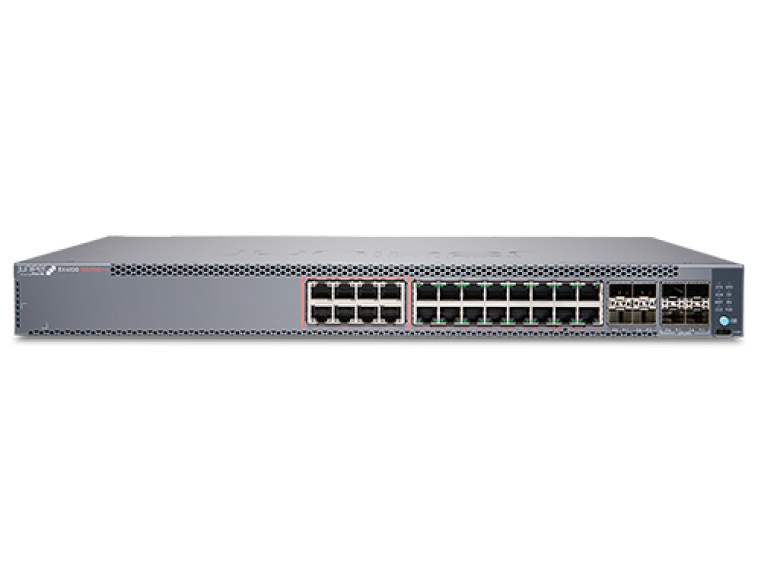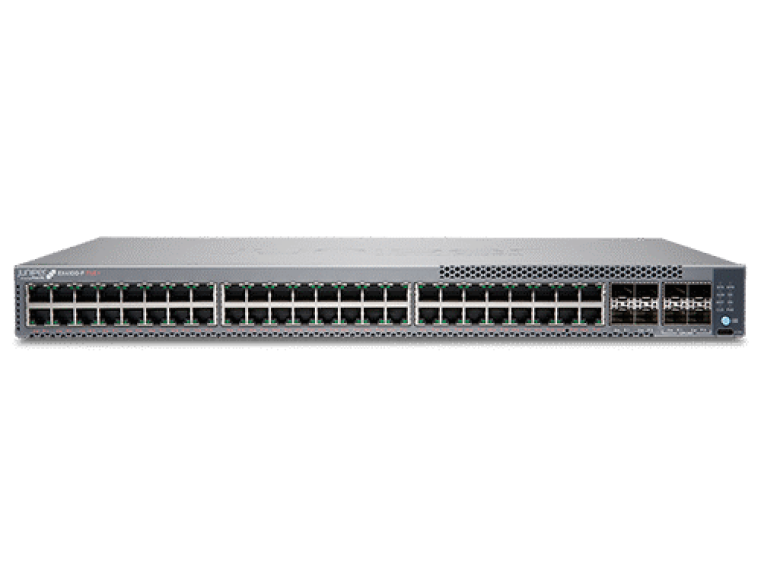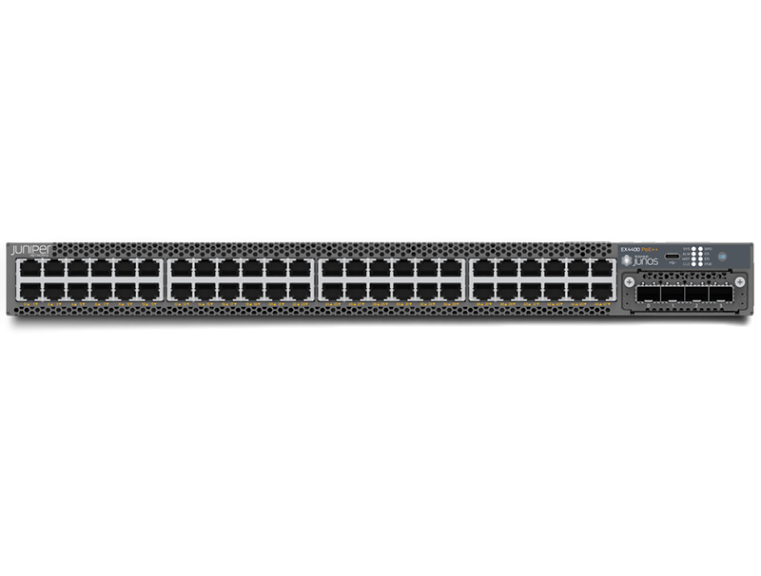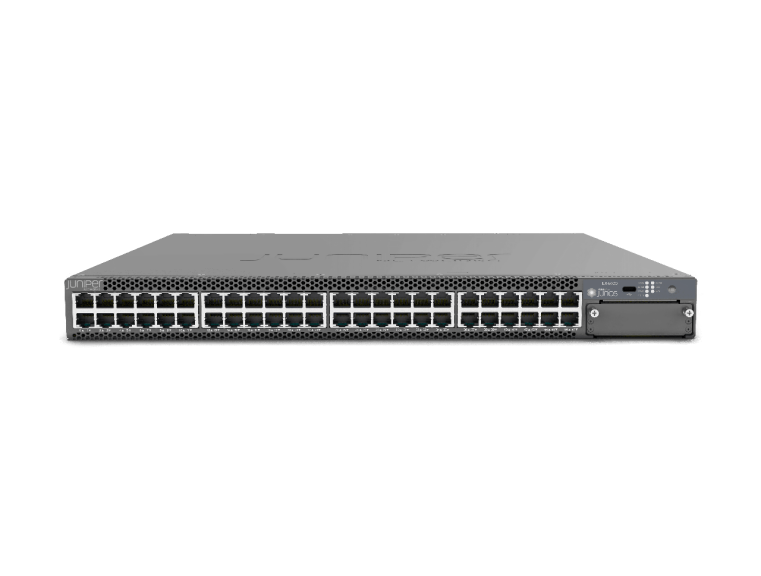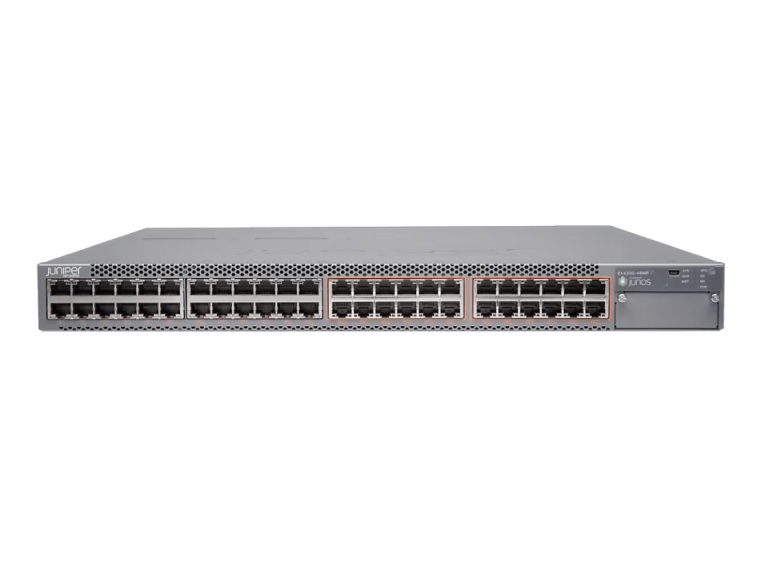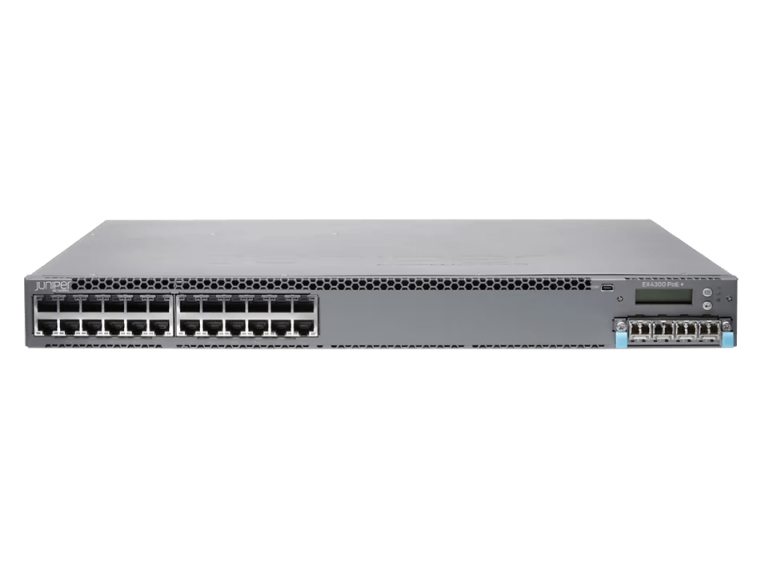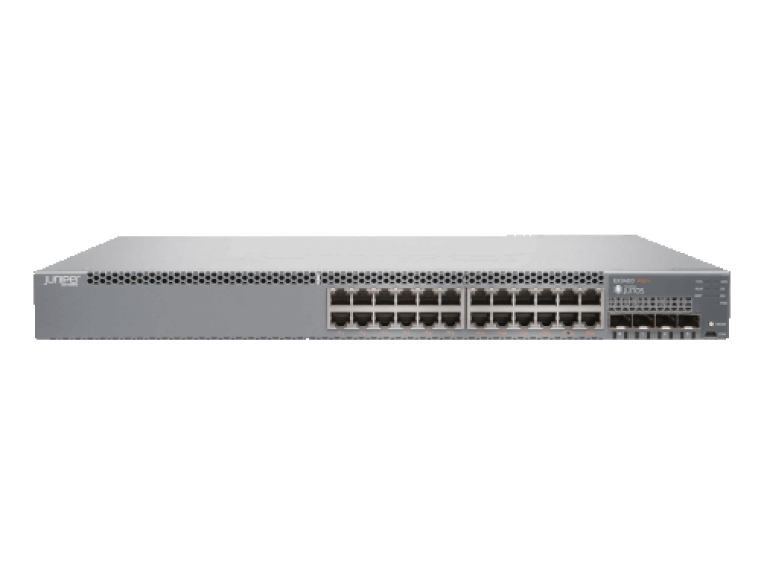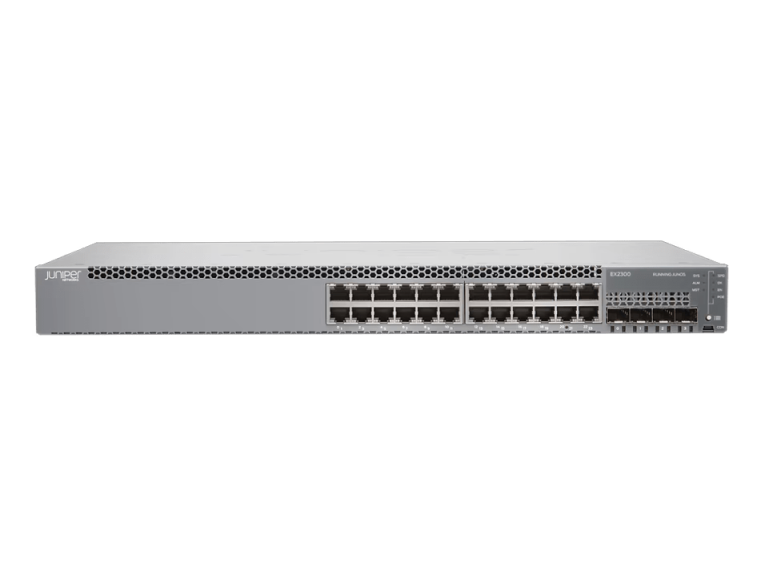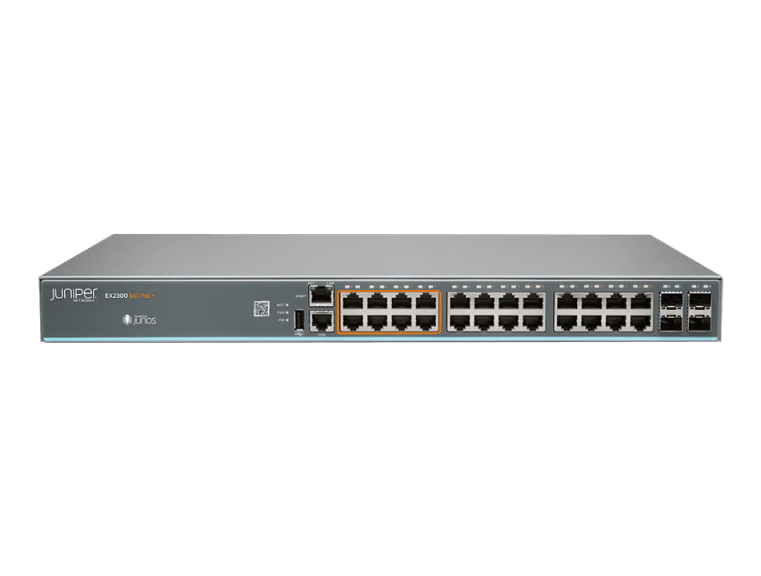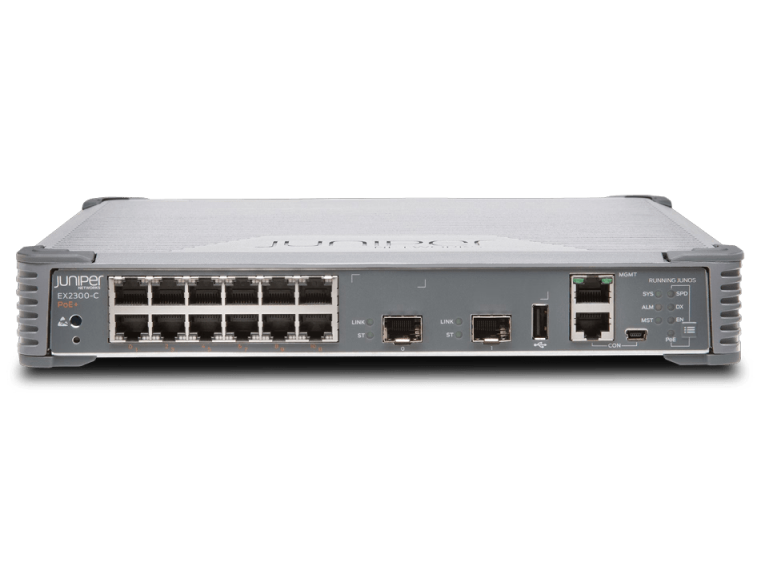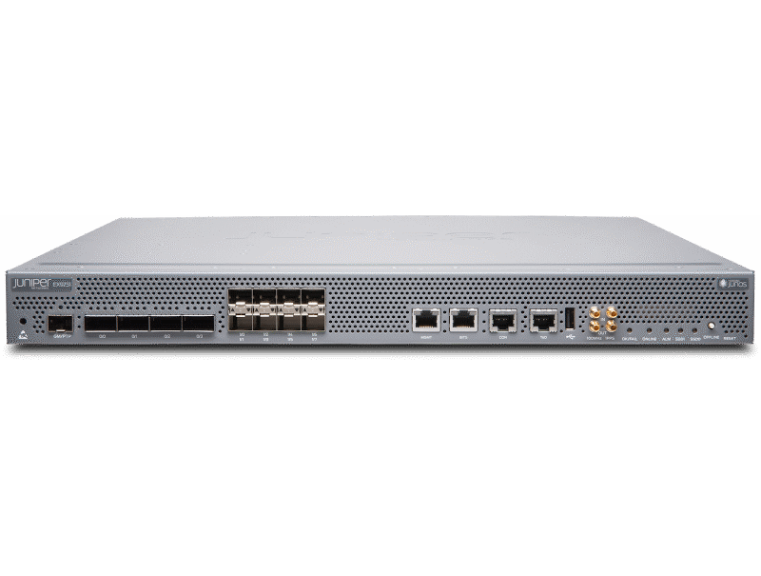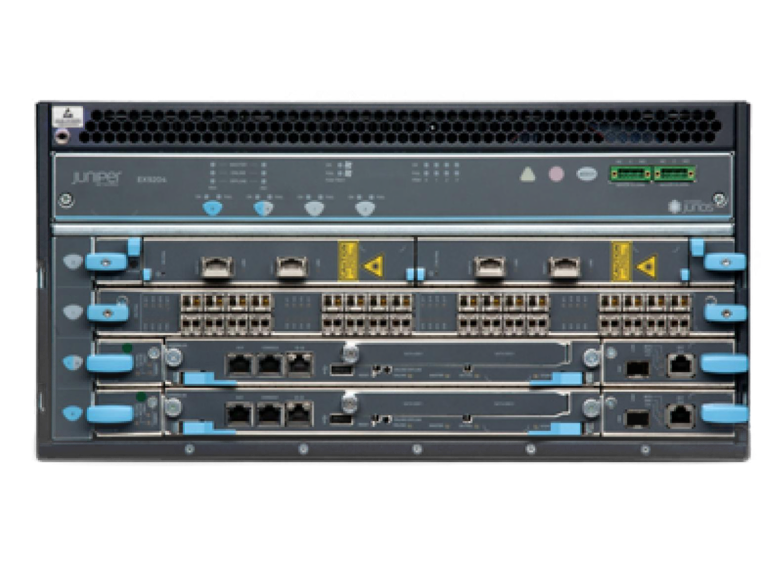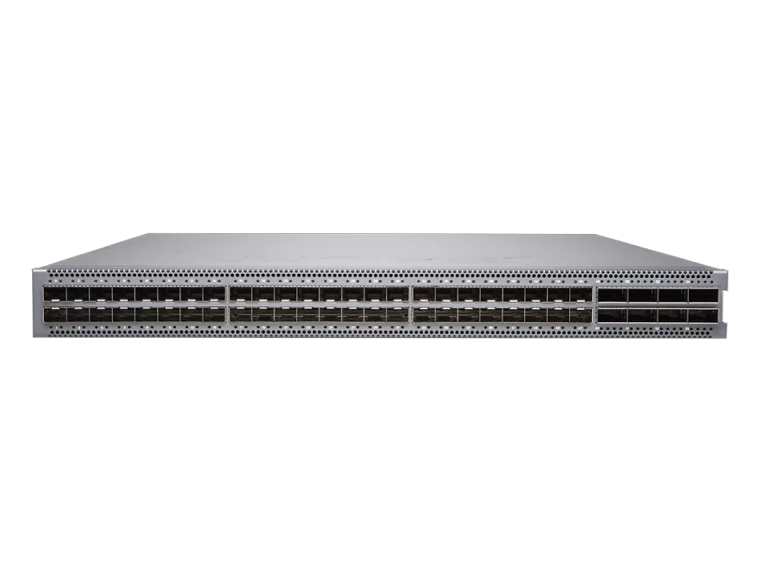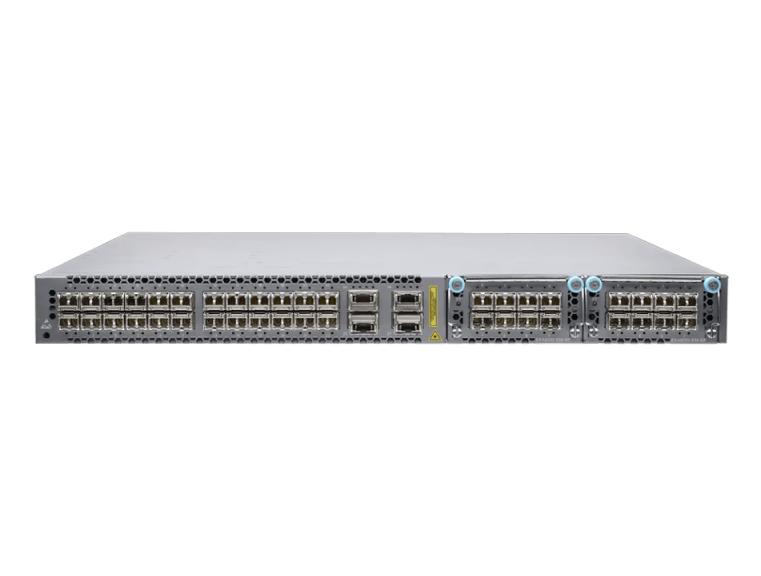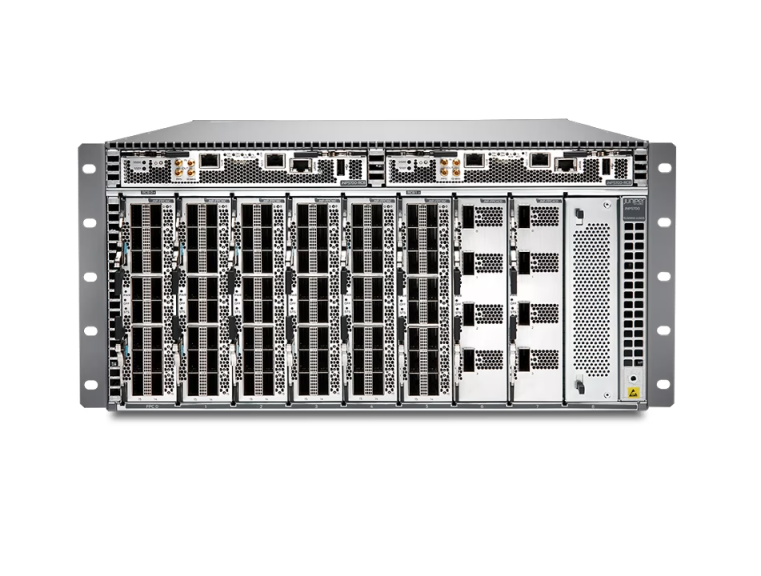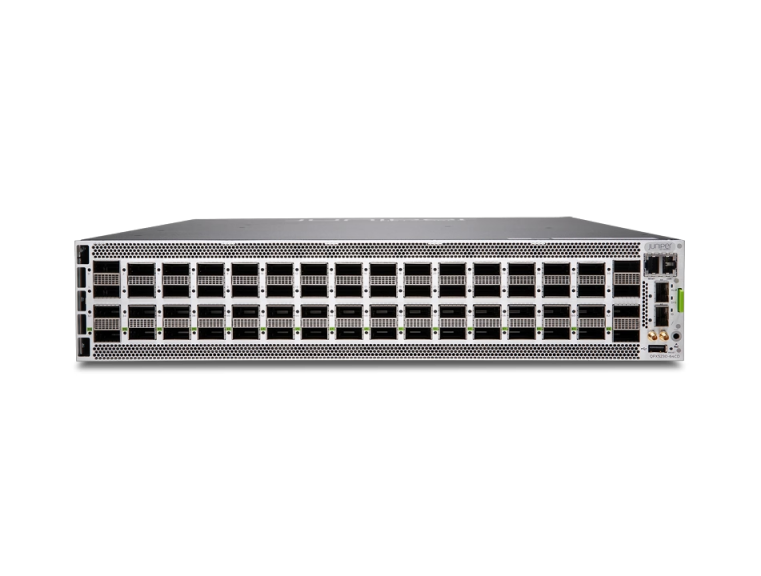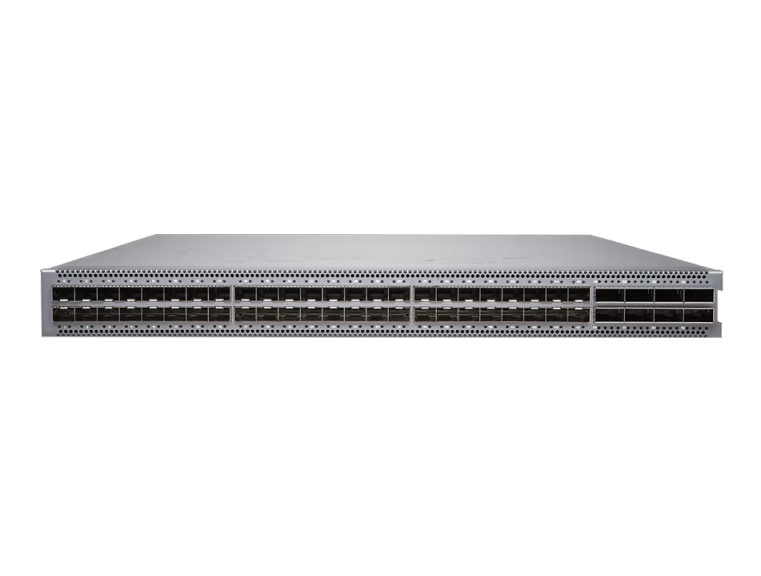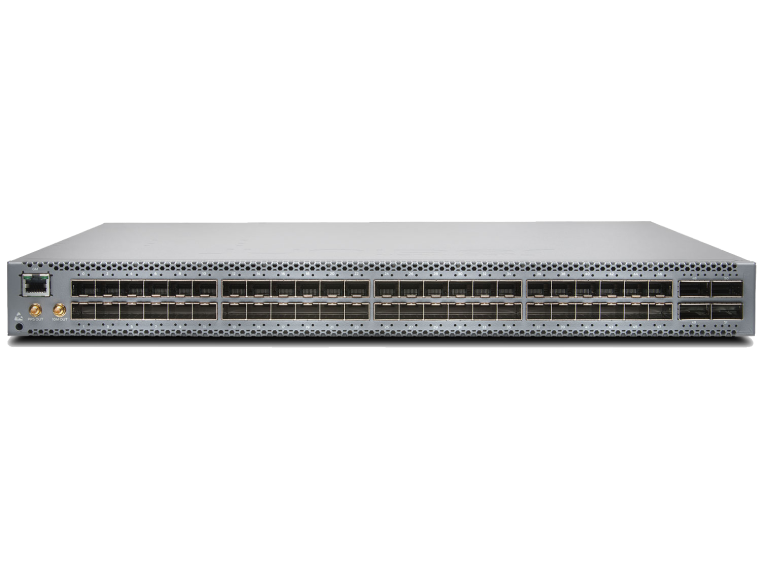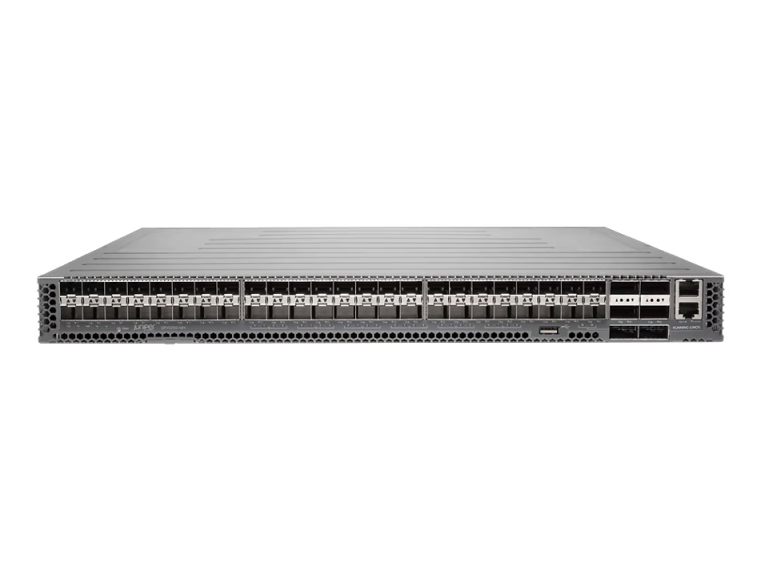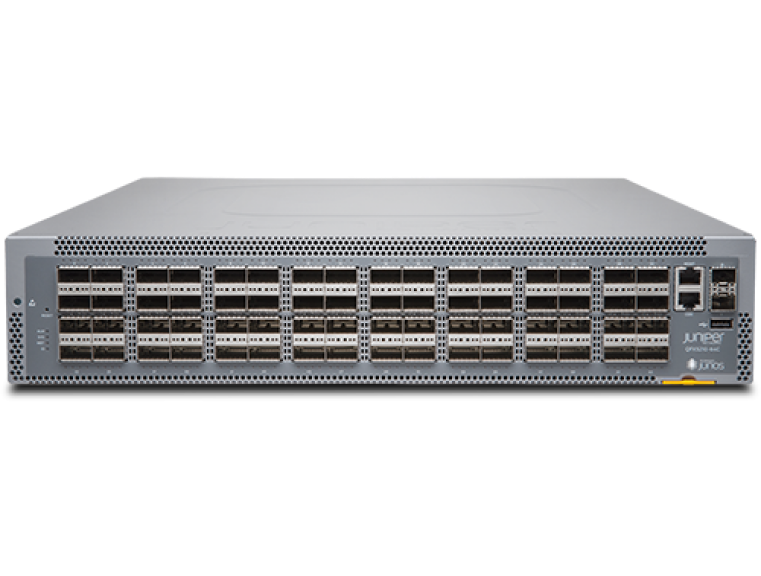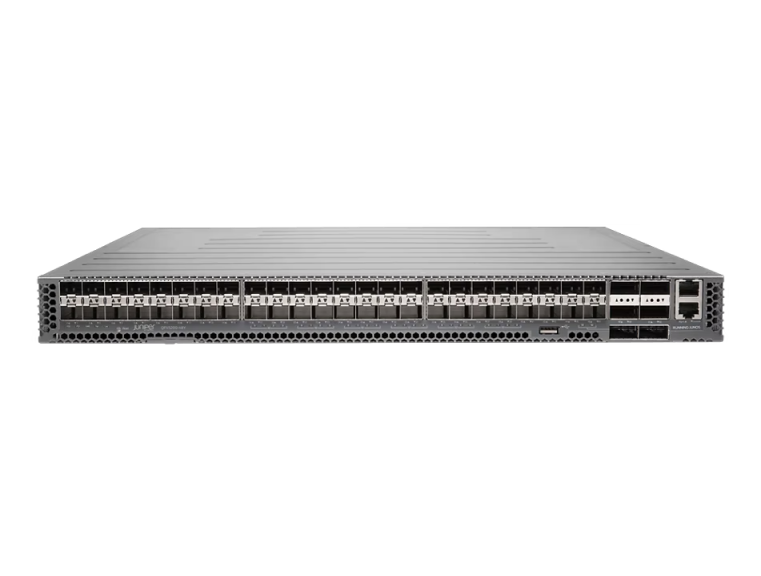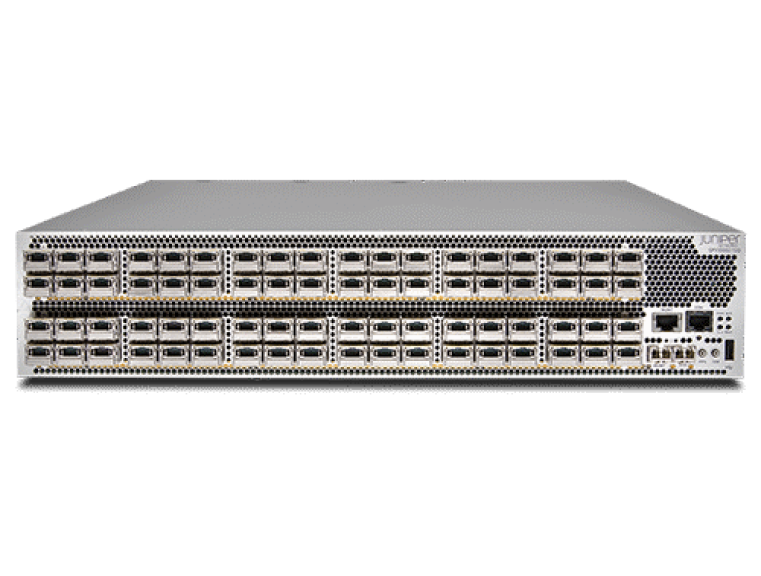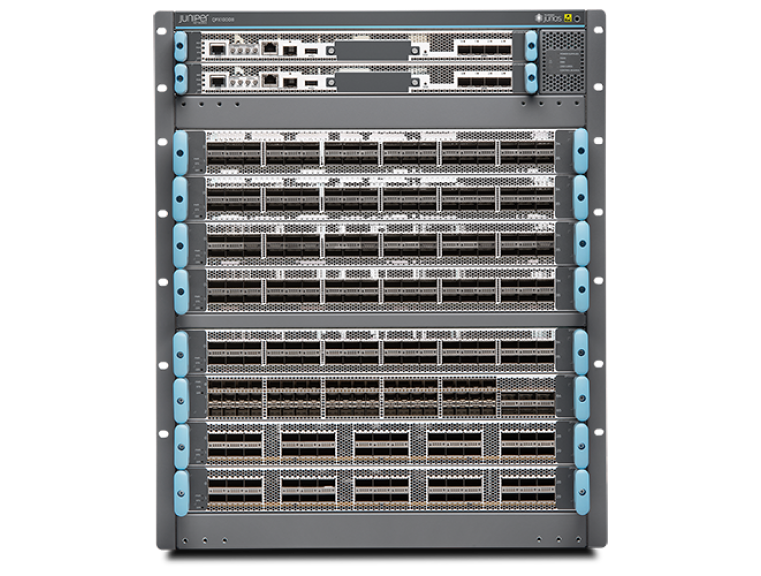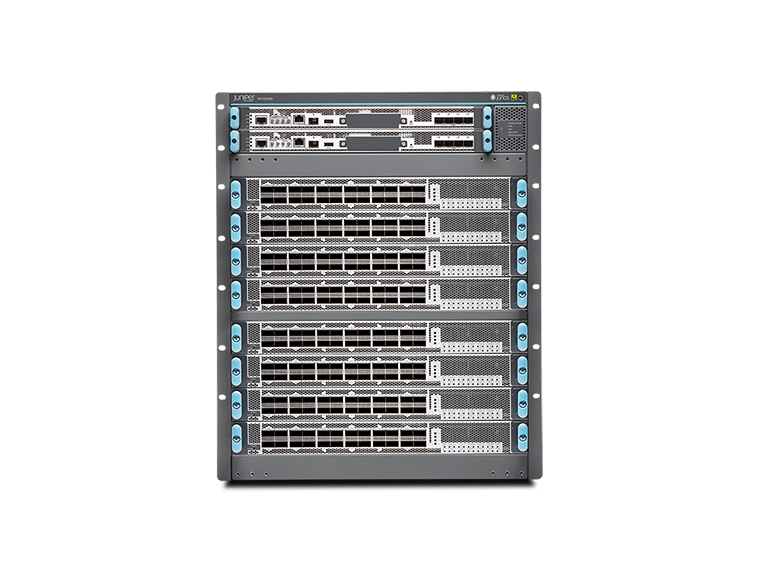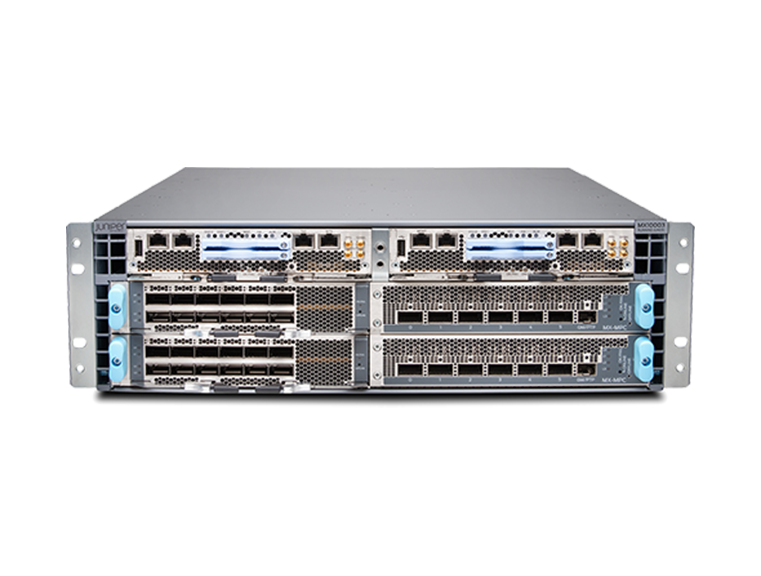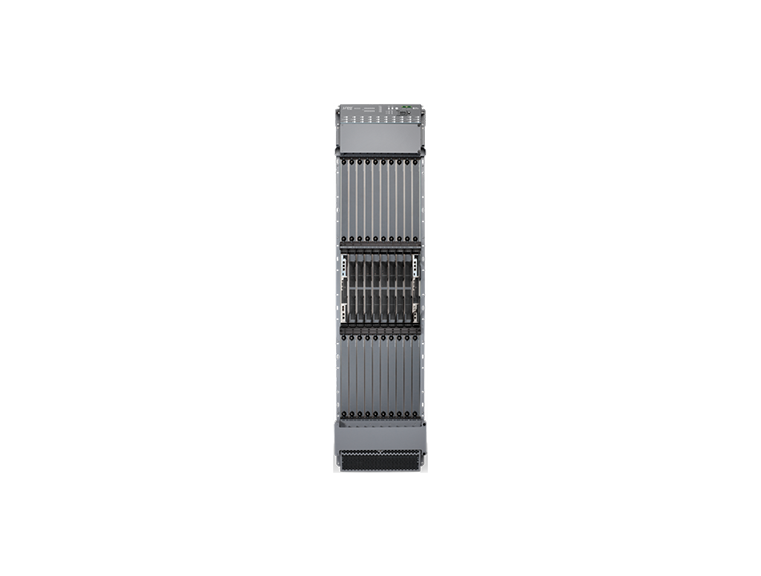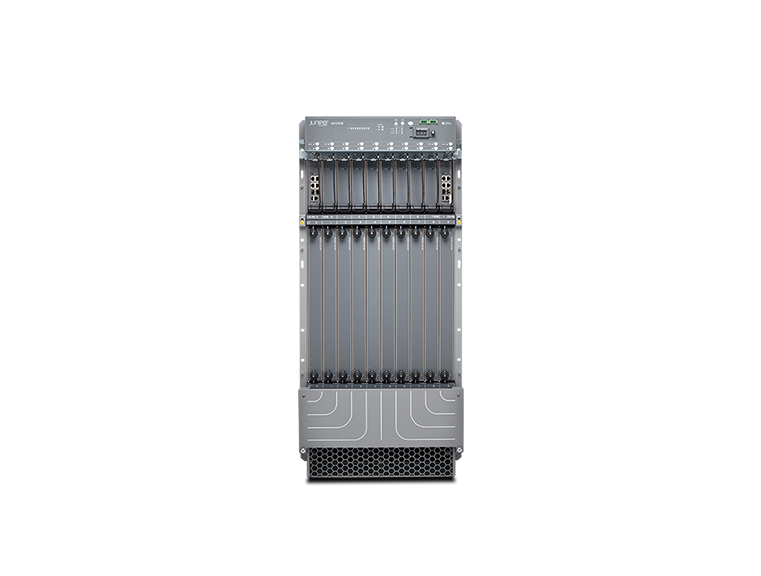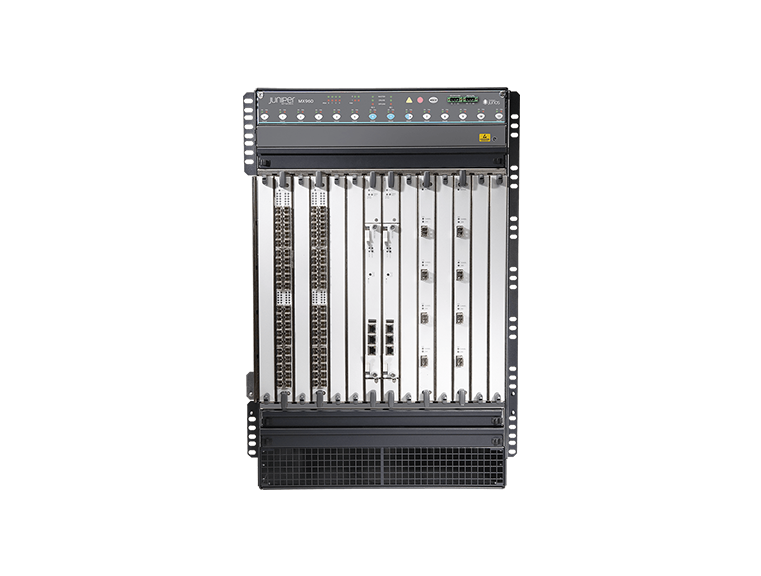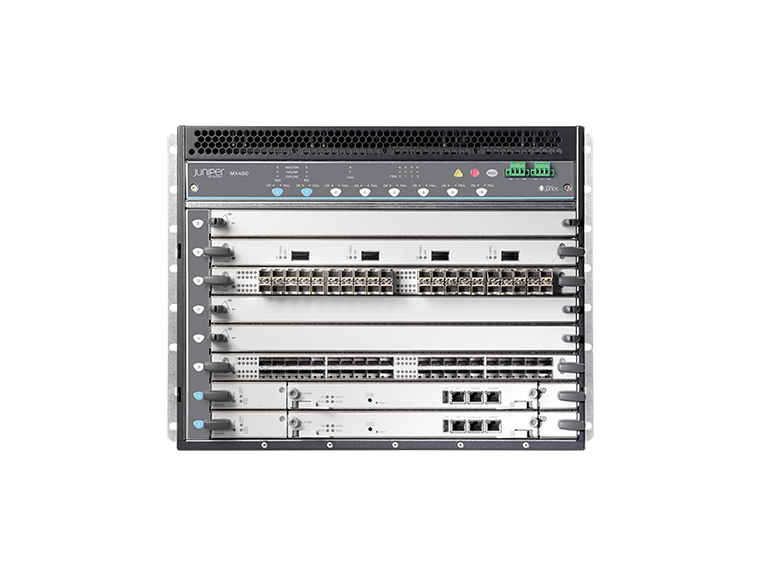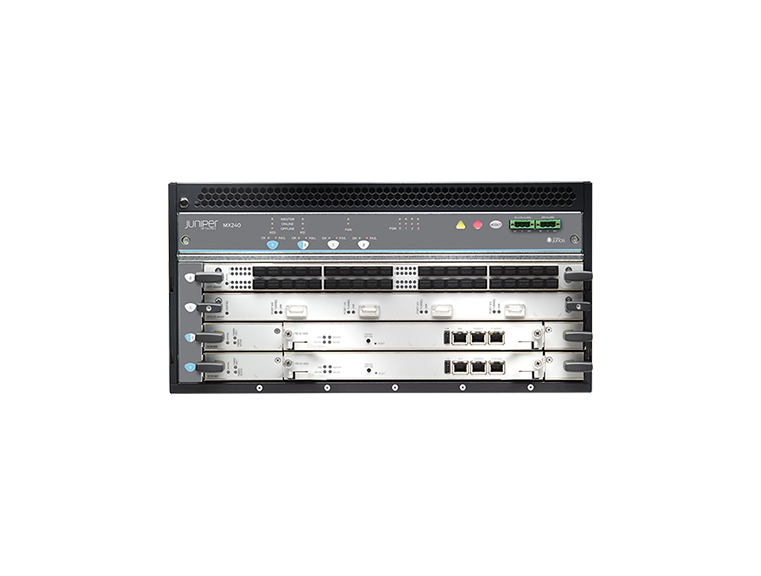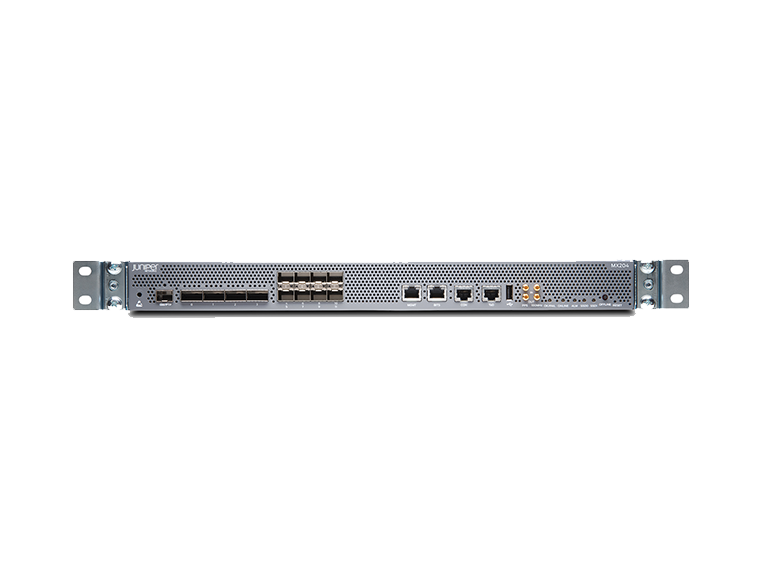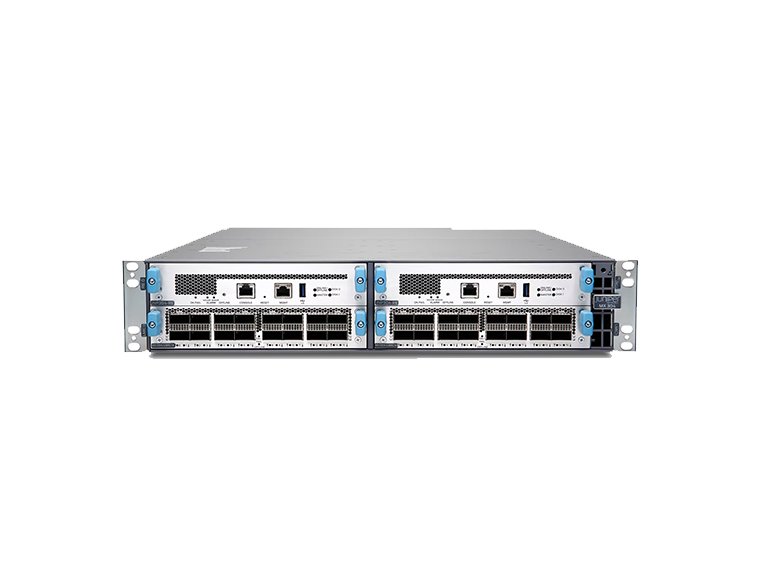Data packet timestamping: When the optional data packet timestamping feature is enabled, select packets flowing through the QFX5130 are timestamped with references to the recovered PTP clock. When these packets are received by nodes in the network, the timestamping information can be mirrored onto monitoring tools to identify network bottlenecks that cause latency. This analysis can also be used for legal and compliance purposes in institutions such as financial trading, video streaming, and research establishments.
RoCEv2: As a switch capable of transporting data as well as storage traffic over Ethernet, the QFX5130 provides an IEEE data center bridging (DCB) converged network between servers with disaggregated flash storage arrays or an NVMe-enabled storage-area network (SAN). The QFX5130 offers a full-featured DCB implementation that provides strong monitoring capabilities on the top- of-rack switch for SAN and LAN administration teams to maintain clear separation of management. The RDMA over Converged Ethernet version 2 (RoCEv2) transit switch functionality, including priority-based flow control (PFC) and Data Center Bridging Capability Exchange (DCBX), are included as part of the default software.
Junos Evolved features: The QFX5130 switch supports features such as L2/L3 unicast, EVPN-VXLAN, BGP add- path, RoCEv2 and congestion management, multicast, 128- way ECMP, dynamic load balancing capabilities, enhanced firewall capabilities, and monitoring.
Junos OS Evolved Architecture: Junos OS Evolved is a native Linux operating system that incorporates a modular design of independent functional components and enables individual components to be upgraded independently while the system remains operational. Component failures are localized to the specific component involved and can be corrected by upgrading and restarting that specific component without having to bring down the entire device. The switches control and data plane processes can run in parallel, maximizing CPU utilization, providing support for containerization, and enabling application deployment using LXC or Docker.



















